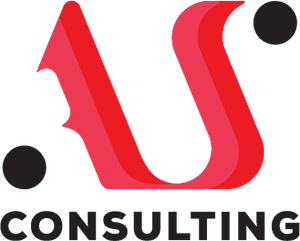
FOOD DEFENSE THROUGH HISTORY OF INCIDENTS
August 14, 2023
FOOD SAFETY MANAGEMENT APPLIED BY DISTRIBUTORS (AGENTS AND BROKERS STANDARDS)
September 24, 2023We talked about safety and health at work in the blog dated February 24, 2021. (https://asconsulting.rs/health-and-safety-at-work-standard-iso-450012018/), where it is shown that around 2 million people in the world lose their lives annually due to accidents at work or related to work. This black statistic, unfortunately, has not changed, according to data from the ILO (International Labor Organization), the statistics for 2022/2023 show that annually around 2.3 million people lose their lives, as many as 340 million people are affected by some form of injury at work and 160 million people with diseases related to working conditions.
The statistics are not better when it comes to Serbia, according to the Work Report for 2022 of the Occupational Safety and Health Administration, during 2022 there were 11 deaths and 1,127 serious injuries at work in Serbia, while the total (with minor injuries) that number grew to (even!) 12,692.
What have we done to try to improve the current situation?
A new law on safety and health at work (Law on Safety and Health at Work, (“Official Gazette of RS”, no. 35/2023) was adopted (after 18 years), which entered into force on 08.05.2023.
Stricter measures are defined by the law, considering that so far they have not contributed to the safety and health in the workplace being at a satisfactory level.
Given that the ways of working have changed significantly in recent years (especially due to COVID-19), the legislator recognizes the novelty, so the new law defines the terms “work from home” and “remote work” as work at a workplace outside the premises employer, which is carried out using communication technologies.
Carrying out high-risk work: Before starting work at height, in depth, in a confined space, in a space with potentially explosive atmospheres, on an energy facility, when using dangerous chemical substances, the employer is obliged to work in zones where there is a serious, unavoidable or immediate danger or harm that may endanger the health of the employee, ensure the issuance of a work permit, whereby he is obliged to determine the procedure and manner of issuing the permit in question.
Safety at the construction site and the work site: a new term called “work site” was introduced, which is defined as an outdoor area where work is carried out in accordance with the elaboration on the arrangement and execution of the works, so a new obligation is introduced for employers to prepare an elaborate on the arrangement of the construction site and workplaces and submit the same to the labor inspectorate together with the notification of the start of work.
Training of employees for safe and healthy work: The employer is obliged to train the employee for safe and healthy work, whereby the relevant training is carried out theoretically and practically, in accordance with the training program for safe and healthy work adopted by the employer.
In addition, the Law expressly prescribes the employer’s obligation to train employees in the proper use of personal protective equipment.
Training for high-risk positions must be renewed once a year, while for other jobs, once every three years.
Raising the level of competence for professionals who perform safety and health at work
Instead of persons for safety and health at work, there are now two categories of experts who perform safety and health at work:
1. Occupational safety and health advisor (a professional person who performs occupational safety and health tasks, has the appropriate level of qualifications, passed an appropriate professional exam, has a license to perform the tasks of an occupational safety and health advisor and is appointed by the employer in a written act to perform those jobs);
2. Associate for safety and health at work (a professional person who performs safety and health at work in the activities referred to in Article 47, paragraph 1 of this law, has the appropriate level of qualifications, passed the appropriate professional exam, a license to perform the duties of an associate for safety and health at work and which the employer appoints in a written act to perform those tasks);
When is an advisor hired and when is an associate hired?
For companies that operate in high-risk activities (which now include transport and storage), the name of the occupational safety and health person has been changed to “occupational safety and health advisor”.

For activities that are not considered high-risk according to Article 48, an “associate for safety and health at work” is hired.

If he cannot appoint one of his employees who meets the requirements of Article 48 for occupational health and safety, the employer may, exceptionally, hire a legal entity or an entrepreneur who has a license to perform occupational health and safety. In the activities referred to in Article 48 of this law, an employer who employs or employs between 251 and 500 employees is obliged to conclude a full-time employment contract with at least two occupational health and safety advisors, and an employer who employs or employs more of 500 employees is required to conclude a full-time employment contract with at least three occupational safety and health advisors.
The duties of the occupational safety and health advisor now include monitoring changes in regulations and harmonizing employer acts, monitoring standards and technical progress in the field of occupational safety and health.
This is a significant positive change, where the legislator recognizes the importance of standards related to safety and health at work. To recall the ISO45001 standard:
ISO 45001:2018 is a standard developed by the ISO Organization for Standardization, which specifies the requirements for an occupational health and safety management system and provides guidelines for their use. This enables organizations to provide a healthy and safe working environment by preventing work injuries and occupational diseases.
ISO 45001:2018 can be applied to any organization that wants to establish, implement and maintain an OH&S management system in order to improve the control of risks related to occupational safety and health. It can be applied in any type of organization, regardless of its size or activity.
This standard helps organizations to achieve the planned outputs of their OH&S management system. In accordance with the OH&S policy, the planned outputs of this management system include:
•continuous improvements in OH&S performance
• fulfillment of legal and other requirements
• achieving OH&S objectives
The standard provides requirements for the OH&S management system with guidelines for their application, in order to help organizations provide a healthy and safe working environment, in order to prevent injuries at work and occupational diseases. In accordance with the organization’s OH&S policy, the standard helps to achieve OH&S goals, continuous improvement and compliance with legal requirements related to this area.
If you want to improve the occupational health and safety system in your company, the right choice is the implementation of the ISO 45001:2018 standard. For help with implementation, you can contact our agency!!!




